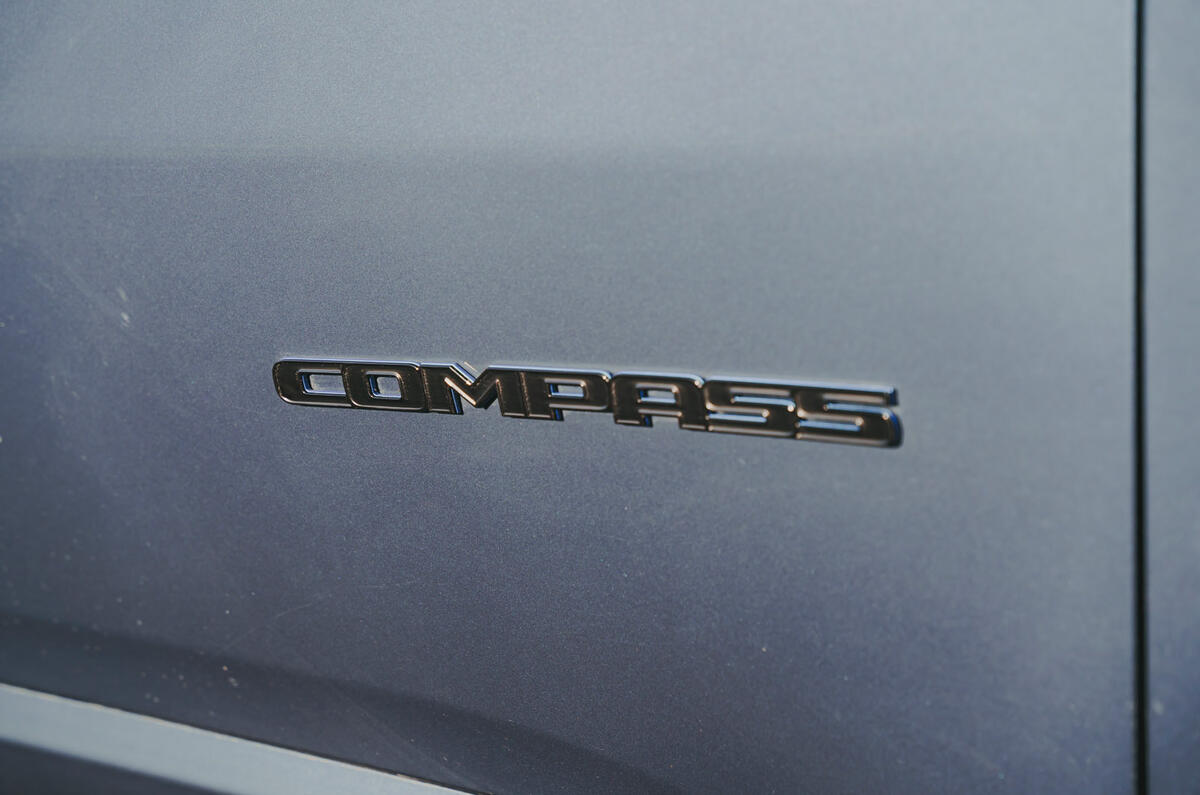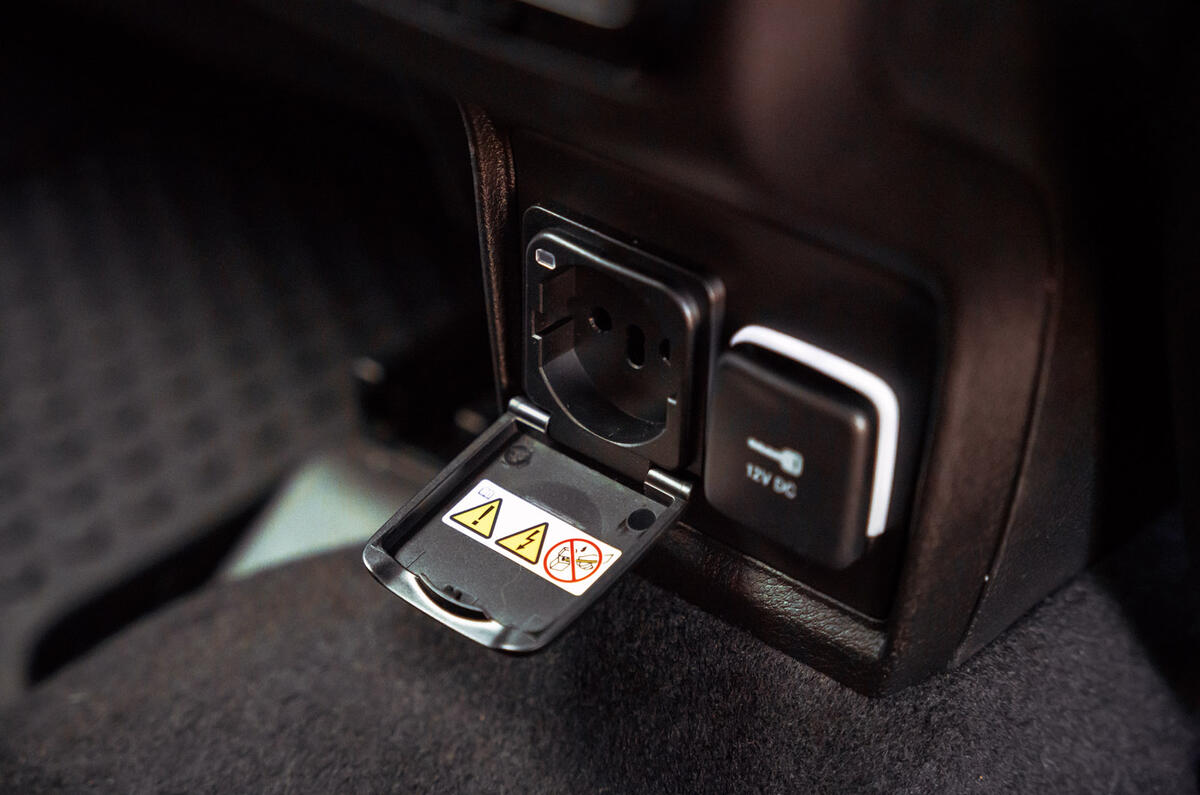The dynamics of the powertrain are also well sorted. The engine acts exclusively on the front axle and the motor only on the rear, so that means 178bhp and 199lb ft are going to the front and 59bhp and 184lb ft are going to the rear. That’s a very front-biased arrangement, and that’s what it feels like: the balance is safe and secure, and neither traction nor torque steer is ever an issue.
Keeping the front and rear drive separated doesn’t mean that when the battery is ‘empty’ you lose the four-wheel drive. The car’s brains will always try to reserve about 3% of battery capacity and top it up using regenerative braking. That way, even when you haven’t charged the car, it can add some rear drive when necessary and generally function as a regular full hybrid. Conversely, in EV mode, it’s rear-wheel drive only.
COMFORT AND ISOLATION
‘Am I comfortable in this car?’ should be an easy question to answer, but somehow in the Compass it isn’t.
Subjectively, we found there to be an above-average amount of road noise, with some wind whipping around the door mirrors. However, our sound-level gauge disagreed, and it turns out the Compass is on par with most of its rivals. The seats are confusing, too.
When you first climb into them, you might perceive them as particularly welcoming: the driving position is tall and commanding, with plenty of adjustment, and the squabs and backs are squishy in a way that you won’t generally find in German cars.
Spend some more time in them, though, and you will find that they lack support. The soft padding isn’t quite as comfy as it initially seems, the squab is a touch too short for taller drivers and the shape changes your posture in such a way that causes lower back ache for some.
The chassis equally confounds expectations. The firmness may initially be disappointing, but sharp road imperfections are rounded off very well for a car with 19in wheels, even if rough surfaces can introduce some patter. The tight body control means the Compass 4xe manages to avoid the nauseating floatiness that can plague heavy and softly sprung cars, too.
ASSISTED DRIVING NOTES
The new Compass has all the modern active driver aids that you could wish for. All but the cheapest model get adaptive cruise control with stop and go, lane keeping assistance, blindspot monitoring, traffic sign recognition with speed assistance, driver drowsiness monitoring and a system that checks for traffic coming from the sides when reversing.
The trouble is that none of it works all that well. The ACC is easily spooked by cars in another lane, the LKA is fairly typical in being annoying off the motorway and active lane following is due to be included but wasn’t on our test car. The speed limit warning, collision warning and blindspot monitoring are all too intrusive in their default settings.
There are two saving graces in the form of a chunky button to turn off the LKA and a button to switch between ordinary and adaptive cruise control, but that shouldn’t be a substitute for mature systems.


























































